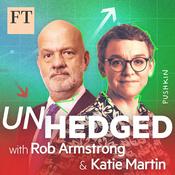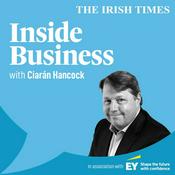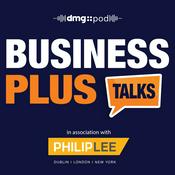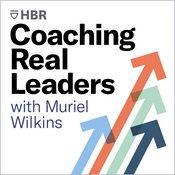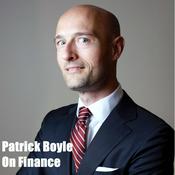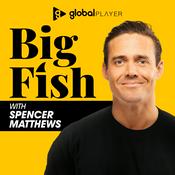186 episodes
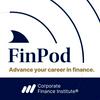
Corporate Finance Explained | Understanding Goodwill: The Intangible Asset
25/12/2025 | 14 mins.
In the high-stakes world of M&A, Goodwill is arguably the most important yet invisible asset on a modern balance sheet. It represents the "engine of ambition," but as history shows, it is also a significant source of financial volatility.In this episode of Corporate Finance Explained on FinPod, we unpack why companies pay billions in premiums, how that value is tracked, and what happens when those strategic promises vanish overnight.What is Goodwill? The Anatomy of a PremiumGoodwill is an intangible asset that appears only when one company acquires another. It is the accounting placeholder for the premium paid over the fair market value of a company's identifiable net assets.When a buyer pays an extra $500 million for a $1 billion company, they are buying "strategic future value" that doesn't fit into a physical ledger. This premium typically covers:Brand Equity: The power of established names like Disney or Coca-Cola. Human Capital: Specialized workforce talent and "acqui-hires." Synergies: The quantified promise that the combined businesses will unlock efficiencies neither could achieve alone. Network Effects: Market dominance and ecosystem integration.The Accounting Shield: PPA and ImpairmentBecause Goodwill is intangible, regulators use a rigid process called Purchase Price Allocation (PPA). Auditors first identify and value every "identifiable" asset (patents, inventory, debt). Only the leftover remainder is recorded as Goodwill.Unlike a factory or a machine, Goodwill is not amortized. It stays on the balance sheet indefinitely until a "Triggering Event" occurs, requiring an Impairment Test.Strategic Red Flags (Triggering Events):Persistent declining revenue or shrinking margins. Major leadership changes or failed integration. Market downturns or the loss of a key customer.If the fair value of the business unit drops below its carrying value, an Impairment Charge is mandatory. While this is a non-cash charge, the stock market reaction is often violent because it destroys management credibility.Case Studies: Strategic Success vs. FailureFacebook & Instagram (Success): Meta paid $1 billion for an app with negligible assets. The Goodwill was a bet on network effects, which now generates tens of billions. Amazon & Whole Foods (Success): The premium bought time, instantly giving Amazon a physical retail and logistics footprint. Kraft Heinz (Failure): A $15.4 billion write-down occurred because aggressive cost-cutting cannibalized the very brand equity they paid for. GE & Alstom (Failure): A $22 billion write-down triggered by misjudging the gas turbine market.The Critical Ratio: Goodwill to EquitySmart investors look past the absolute dollar amount and focus on the Goodwill-to-Equity ratio. A high ratio is a strategic warning sign; it tells you the company is heavily reliant on future promises rather than proven stability.Key Takeaway: An impairment is a lagging indicator. By the time the write-down happens, the business has been suffering for a long time. The charge is simply the officially mandated confirmation of strategic failure.

Corporate Finance Explained | How Inflation Impacts Strategy, Costs, and Capital Decisions
23/12/2025 | 17 mins.
Inflation is no longer just a macroeconomic headline; it is a systematic distortion of the corporate financial engine. For finance teams, high inflation makes historical data obsolete and forces a fundamental rewire of capital allocation, debt management, and pricing strategies.In this episode of Corporate Finance Explained on FinPod, we move past "macro talk" to explore the granular impact of rising costs and the specific, advanced maneuvers successful firms are using to survive a high-uncertainty world.The Inflationary Distortion: Where the Models BreakWhen inflation spikes and stays sticky, static assumptions fail. The pressure is felt first in the supply chain but quickly migrates to the balance sheet:Gross Margin Compression: Direct hits from the Cost of Goods Sold (COGS) as raw materials, energy, and logistics rise aggressively.The Working Capital Trap: Inventory becomes a strategic nightmare. The rising replacement cost means companies must tie up more cash just to maintain the same volume of goods on the shelf.The Death of Standard Costing: Traditional models that set standard costs for the year become obsolete instantly, leading finance to chase "phantom profits" while real cash flow erodes.The 4 Major Strategic ShiftsInflation forces a paradigm shift in the relationship between finance and operations:Ruthlessly Dynamic Pricing: Annual price reviews are replaced by micro-adjustments and "pricing corridors." Finance must now lead sales by analyzing consumer elasticity weekly to protect margins without losing volume. Active Debt Management: As central banks raise rates, the cost of capital becomes a moving target. Treasury teams are shifting from floating-rate to fixed-rate debt to buy certainty against future spikes. Investment Reprioritization: High inflation forces companies to raise their hurdle rates. Long-term, low-margin projects are screened out in favor of high-return, short-payback investments that minimize exposure to future uncertainty. Valuation Reset: Inflation hits valuations twice—it lowers expected future real cash flows and increases the discount rate (WACC) used in DCF models, causing a sharp drop in present value.Tactical Case Studies: Masterclasses in ResilienceProcter & Gamble: Used "subtle deflation management" by redesigning pack sizes and promoting premium tiers to protect margins while keeping shelf prices stable.Walmart: Utilized its massive balance sheet as an inflationary hedge, intentionally overstocking inventory to lock in pre-inflation prices and steal market share.Delta Airlines: Increased forecasting velocity from quarterly to weekly to manage the extreme volatility of fuel and labor, allowing for faster operational pivots.The Finance Toolkit for High UncertaintyTo stay strategic, finance professionals must adopt these five non-negotiable tools:Build Scenario-Based Forecasts: Move away from a single base case to "Low, Base, and High" inflation scenarios to stress test margins.Integrate Finance with Sales: Provide the data infrastructure to analyze elasticity in real-time.Rebalance Capital Structure: Aggressively use interest rate swaps or shift to fixed-rate debt to lock in borrowing costs.Enforce Shorter Payback Horizons: Prioritize projects with immediate cash returns to reduce long-term risk.Granular Cost Visibility: Break down cost drivers into specific components (e.g., lithium, copper, regional shipping) rather than broad categories.

Corporate Finance Explained | How Sports Franchises Make (and Lose) Money
18/12/2025 | 12 mins.
Professional sports franchises are some of the most recognizable brands on earth, yet many operate with negative annual cash flows. This deep dive moves past the scoreboard to explore the "Billion-Dollar Paradox": how trophies worth billions can lose money on paper while their valuations double every decade.The Pillars of Team RevenueModern sports finance has moved far beyond ticket sales and hot dogs. Today, revenue is driven by long-term, stable engines:Media & Broadcast Rights: The "stability engine" of sports. Leagues like the NFL have secured over $100 billion in media deals with giants like Amazon and ESPN. These deals provide a guaranteed income floor that supports high valuations regardless of on-field performance.Stadium Economics & Premium Seating: The real differentiator is controlling the "premium experience." Teams like the Dallas Cowboys generate over $600 million annually through high-margin luxury suites, club access, and naming rights deals (e.g., the $700M crypto.com Arena deal).The Real Estate Play: Sophisticated owners now build "entertainment districts" around stadiums. The Atlanta Braves' development, The Battery, actually generates more operating profit than the baseball team itself due to steady rental income and higher margins.The Financial Drains: Why Teams "Lose" MoneyDespite massive revenue, the high cost of competitiveness creates a brutal balance sheet:The Cost of Winning: Player salaries typically account for 50% to 60% of total revenue. This is a gargantuan fixed cost compared to other industries.The Luxury Tax: Leagues use this penalty to discourage runaway spending. Teams like the Golden State Warriors have paid hundreds of millions in penalties just to keep a championship-caliber roster together, viewed as an investment in long-term brand equity.Infrastructure Debt: Modern stadiums cost between $1B and $5B. These are financed with massive debt packages tied to future media revenue, making interest payments a significant recurring cost.Valuation vs. ProfitabilityIn sports, traditional metrics like EBITDA are often useless because they are volatile or negative. Instead, finance teams use:Revenue Multiples: Valuing a team based on total annual revenue divided by the sale price. Because revenue (from media) is predictable and growing, this provides a more stable anchor for billionaires and private equity firms.Asset Appreciation: Owners view teams like fine art or exclusive real estate. The scarcity of franchises (fixed supply) combined with rising global demand drives valuations up even when the income statement is in the red.Case Studies: Strategy on the SpreadsheetFC Barcelona: A cautionary tale of brand strength failing to protect a team from a "debt trap" caused by rigid player contracts and heavy infrastructure loans.Phoenix Suns: A textbook turnaround showing how modernizing ticketing analytics and stadium monetization can skyrocket a team's valuation before a single game is won.Oakland Athletics (Las Vegas Relocation): A pure infrastructure strategy—abandoning a money-losing venue for a new stadium they control in a high-tourism market.

Corporate Finance Explained | Corporate Spin-Offs: How Breaking Up Creates More Shareholder Value
16/12/2025 | 12 mins.
In finance, success often means getting bigger, yet time and again, the market cheers when a huge company decides to intentionally break itself up. Why does spinning off a subsidiary so often unlock massive shareholder value?In this episode of Corporate Finance Explained on FinPod, we break down the strategic logic, mechanics, and critical financial challenges behind corporate spin-offs, making it essential listening for anyone in corporate strategy, M&A, or investor relations.Spinoff Mechanics & Value DriversA spin-off is a powerful, generally tax-free maneuver where the parent company distributes shares of a subsidiary directly to its existing shareholders, creating a fully independent "pure play" company.Here are the four main reasons this strategy often makes the total value of the combined entities much larger than the original conglomerate:Strategic Focus: Separation enables each management team to focus solely on their specific business model (e.g., utility cash flow vs. software growth), thereby removing internal friction and distraction. Valuation Re-Rating (Pure Play Effect): The market hates complexity (conglomerate discount). Breaking the company apart allows analysts to value each "pure play" unit against specific, comparable peers (such as healthcare vs. aviation), instantly increasing the collective value. Better Incentives: Boards can tailor executive compensation (e.g., high stock options for a growth startup) to attract and retain specialized talent, which was impossible under the slow-growth parent. Capital Allocation Freedom: Separated companies can develop capital plans tailored to their specific needs (e.g., one invests billions in 5G, while the other focuses solely on dividends), thereby eliminating internal competition for resources.Case Studies: Breaking Up for GrowthWe examine pivotal spin-offs that redefined industries:PayPal & eBay (2015): PayPal, tethered to the eBay marketplace, was unable to partner with rivals like Amazon. Independence enabled it to launch an aggressive partnership blitz, resulting in its market cap more than doubling in three years due to the strategic freedom it afforded.AT&T & Warner Media (2022): Driven by massive capital allocation issues (feeding both the capital-intensive telecom core and the cash-burning streaming empire). The spin-off allowed AT&T to focus on paying down debt and 5G buildout.General Electric (GE): The ultimate pure play story. Separating the conglomerate into three focused businesses (Aviation, Healthcare, Energy) is projected to unlock significantly higher collective value by removing the devastating conglomerate discount.The Finance Challenge: Pitfalls and ExecutionThe strategy is powerful, but the execution is risky. Finance teams (FP&A, Treasury) must nail these critical areas:Standalone Viability: Building full financial statements from scratch to ensure the new company can survive and thrive without the parent's scale and support. Stranded Costs / Dis-Synergies: The hidden risk where the cost of duplicating shared services (IT, HR, accounting) and building new infrastructure is underestimated, potentially wiping out the expected value.Capital Structure Design: Carefully dividing the corporate debt to ensure both companies emerge with a healthy credit rating and leverage profile that fits their new strategic mission. Investor Communication: Crafting a crystal-clear narrative for investors, providing honest estimates for dis-synergy costs, and proving the math with a robust Sum-of-the-Parts (SOTP) valuation.The next time a spin-off is announced, look past the headlines: Check the clarity of the dis-synergy estimates and whether the new capital structure makes strategic sense. Radical simplification and the quest for pure play are often the most powerful tools in the corporate strategy playbook.

Corporate Finance Explained | How Inflation Impacts Profitability & How Companies Adapt
11/12/2025 | 13 mins.
Inflation is a brutal, immediate pressure point on corporate finance, forcing CFOs and analysts to completely overhaul their operating models. In this episode of Corporate Finance Explained on FinPod, we break down how inflation erodes profit margins, manage debt structures, and the radical countermeasures companies employ to maintain financial resilience.The Dual Attack on the Income StatementInflation hits corporate profits from multiple angles, magnifying instability in the supply chain and labor markets:Gross Margin Erosion: Driven by surging input costs (materials, components, logistics). Companies with long, complex supply chains saw freight costs spike by as much as five times during the 2021-2023 surge.Wage Inflation: A tight labor market forces labor-intensive businesses (retail, hospitality) to increase wages, often outpacing revenue growth and becoming the number one variable cost driver.Operating Expense (OpEx) Creep: Rising costs for utilities, commercial rent, insurance, and IT services further compress the overall operating margin.Structural Impact on the Balance SheetPersistent inflation triggers central bank rate hikes, making the cost of capital structural and damaging long-term valuation:WACC Escalation: Higher interest rates raise the Weighted Average Cost of Capital (WACC), instantly reducing the Net Present Value (NPV) of future projects and shrinking the list of profitable opportunities.Variable Debt Risk: Companies caught with large amounts of variable rate debt face an exploding interest expense, which can quickly become the single largest line item on the income statement.Working Capital Discipline: Cash loses purchasing power daily. Finance teams must use strict working capital discipline (accelerating AR, optimizing inventory) as an inflation insulator to preserve purchasing power.The Strategic Countermeasures PlaybookThe corporate response to inflation is a mix of strategic offense and defense tailored to the industry:Offense (Pricing Power): Utilizing Strategic Staging of price hikes, adjusting package sizes (shrinkflation), and introducing premium tiers to shift focus to perceived value.Defense (Resilience): Forging tighter partnerships with procurement to negotiate long-term contracts and implementing Supply Chain Resiliency by nearshoring production or building inventory buffers.Financial Hedging: Proactively managing debt by shifting from variable-rate to fixed-rate debt and deploying Dynamic Pricing algorithms that adjust prices daily based on real-time cost and demand inputs.Key Takeaway for Finance Leaders:Inflation is a powerful forcing function that pushes finance teams out of the accounting chair and into the cockpit as strategic operators. True success requires financial agility and the ability to adapt radically.
More Business podcasts
Trending Business podcasts
About FinPod
Listen to FinPod, Ask About Wealth and many other podcasts from around the world with the radio.net app

Get the free radio.net app
- Stations and podcasts to bookmark
- Stream via Wi-Fi or Bluetooth
- Supports Carplay & Android Auto
- Many other app features
Get the free radio.net app
- Stations and podcasts to bookmark
- Stream via Wi-Fi or Bluetooth
- Supports Carplay & Android Auto
- Many other app features


FinPod
download the app,
start listening.





